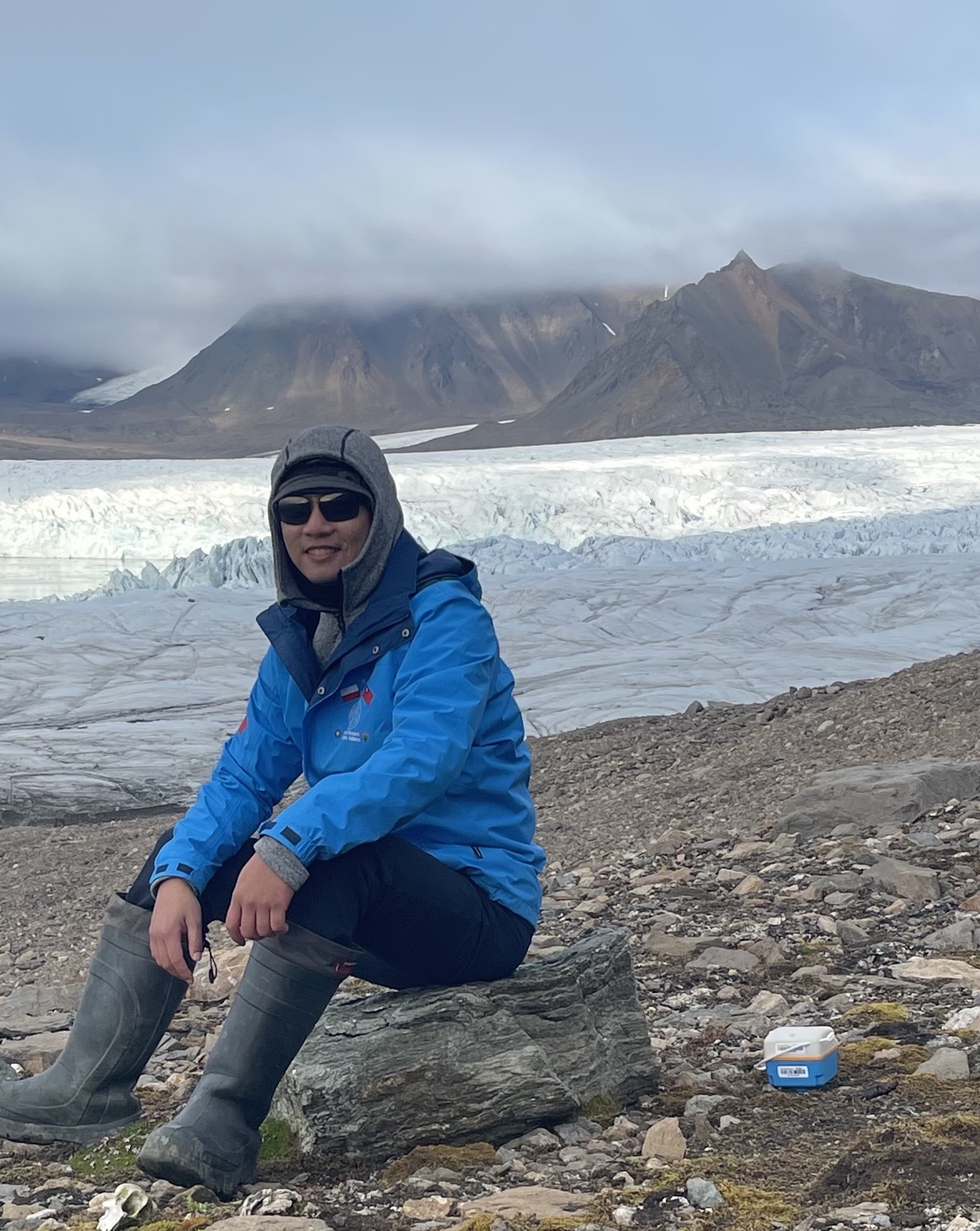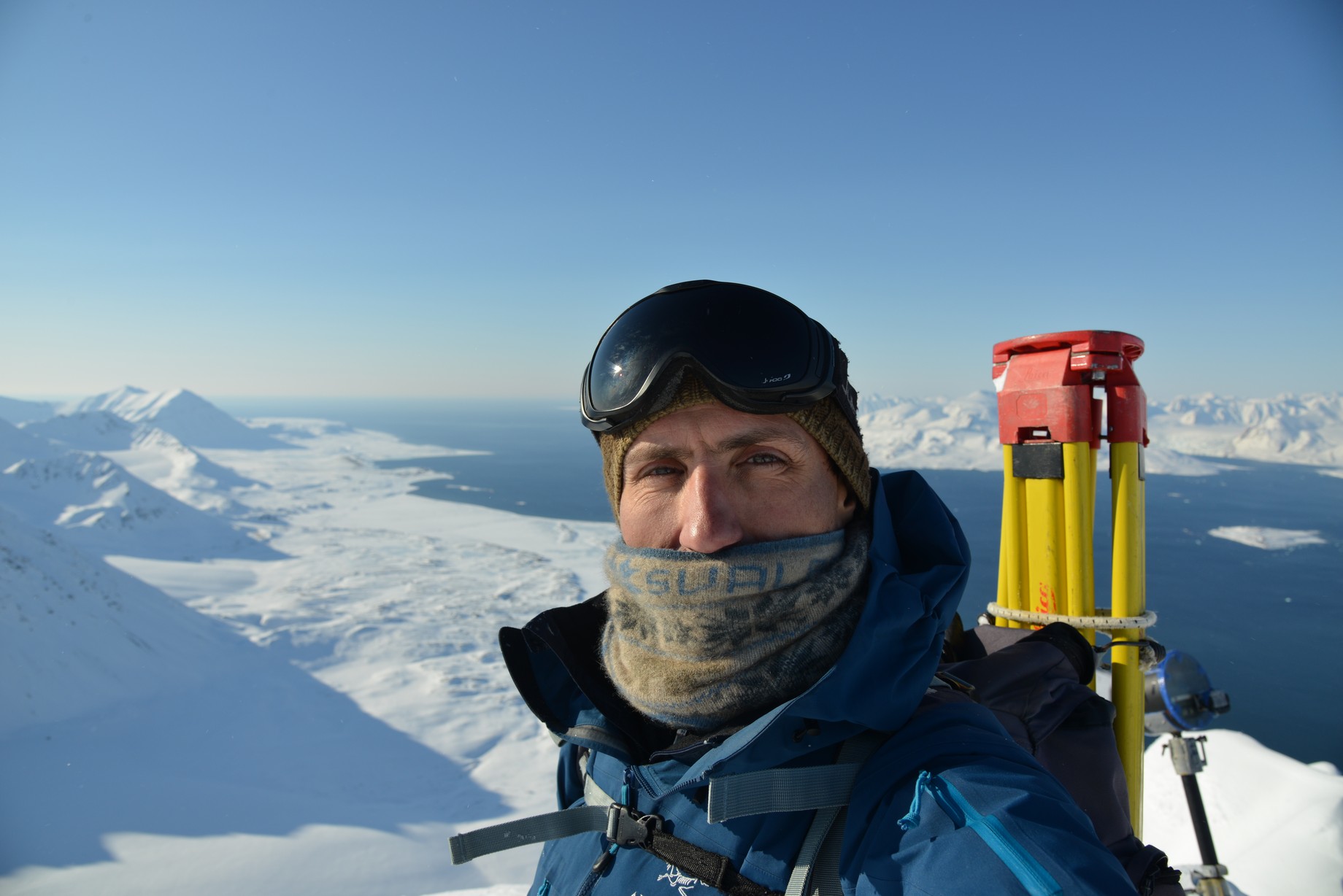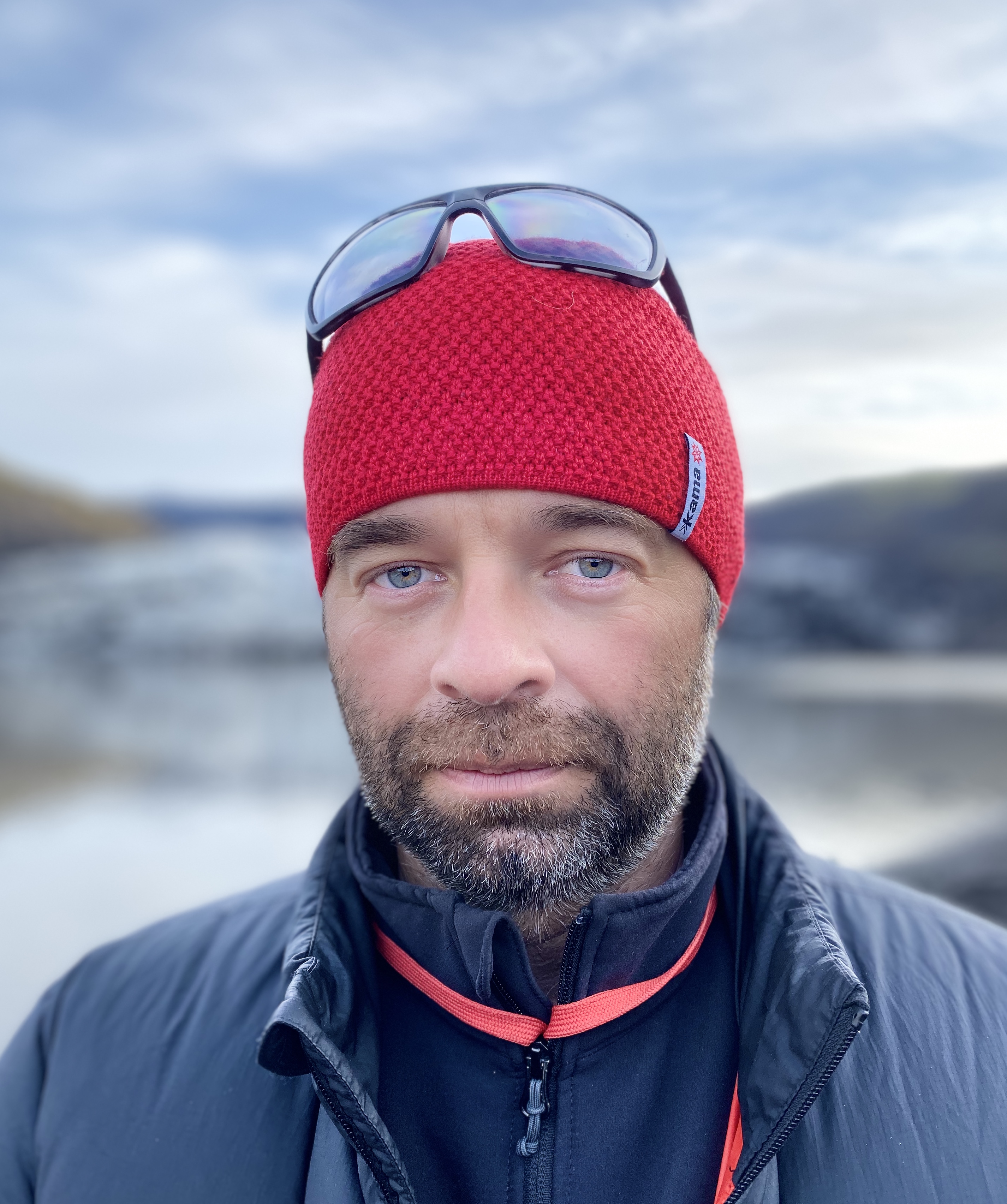Keynote Speakers
Dr. Kristaps Lamsters - University of Latvia
He is a postdoctoral researcher at the University of Latvia with a main interest in the fields of glaciology, glacial geology and geomorphology and Quaternary geology. Since 2014 he has been organizing and conducting scientific expeditions to Polar Regions with a team of scientists from Latvia. His main focus has been geophysical studies of glaciers in Iceland, Greenland, Antarctica and Svalbard. Using ground penetrating radars (GPR), unmanned aerial vehicles (UAV), and GNSS receivers we have obtained the data about the thermal structure, englacial drainage, surface and subglacial topography of several outlet glaciers and ice caps allowing the better understanding of the connection between these components and glacier dynamics.

Title: Thermal structure and subglacial topography of small High Arctic glaciers: Waldemarbreen and Irenebreen, Svalbard. Co-authors: Jānis Karušs, Pēteris Džeriņs, Jurijs Ješkins, Ireneusz Sobota
Glaciers in the Arctic are losing their mass rapidly during the last decades. Therefore it is crucial to assess the impact of global warming on the dynamics of glaciers that is mainly driven by the changes of thermal regime and drainage system. He will present the new data about the thermal structure, englacial drainage and subglacial topography of two polythermal Svalbard glaciers obtained by ground penetrating radar (GPR) during the expedition to NCU Polar Station. Polythermal glaciers in Svalbard tend to have a thick basal layer of temperate ice overlain by cold ice or consist of entirely cold ice in the case of smaller glaciers. This study reveals temperate ice in the accumulation areas of the predominantly cold glaciers. The distribution of temperate ice seems to be governed by the subglacial topography (the presence of over deepened depression), ice thickness and structure (crevasses etc.).
Prof. Hao Kuo-Chen - Department of Earth Sciences, National Central University, Taiwan
Hao Kuo-Chen is a specialist of mountain building and seismogenic process in areas of active collision. His research focuses on understanding the role of the physical properties and fault zone structures of the continental lithosphere on tectonic evolution of collision orogens. To do this he constructs 2D/3D crustal and upper mantle structures in Taiwan orogen and adjacent areas by using 3D seismic tomography, 2D wide-angle refraction/reflection survey, high-resolution multi channel seismic (MCS) survey with active and passive sources. Currently, he involves many projects related to dense seismic array experiments for better capturing environmental signals.

Title: Preliminary results of the icequakes characteristics of Aavatsmarkbreen and Waldemarbreen (Kaffiøyra, Svalbard) from a dense seismic array. Co-authors: Zhuo-Kang Guan, Slawomir Jacek Giletycz, Ireneusz Sobota
Dense seismic array is one of the most powerful tools for capturing active movements of glaciers. Recently, this method has been applied for many glacial environments in both of northern and southern polar regions from the regional to small scales. For the regional scale, previous studies have shown the numbers of icequakes significantly increased in past 20 years due to global warming. For the small scale, calving, cracks, icefalls, crevasses, and some other movements related to glaciers can be recorded in details. In this study, we deployed 40 geophones (10Hz and one vertical component) with 200-300m spacing around Aavatsmarkbreen and Waldemarbreen for recording seismic signals from both glaciers and ambient noises for around 20 days. This is the first time for a dense seismic experiment performed here. According to the current analysis, frequently icequakes occurred and sometimes were heard loudly during the fieldwork as well. Because of the relative quite environment, the seismic signals of icequakes were captured by most of the geophones. Besides, the signals from the rivers of the melting glaciers were recorded. P and Rayleigh waves from icequakes are clearly distinguished from the seismic signals. Based on those signals, locations of icequakes and shallow seismic velocity structures can be well determined. For better constraining seismic velocity, we performed seismic refraction experiment near the NCU polar station. Around 20 days deployment, the data itself already contains valuable signals for further analysis.
Dr. Florian Tolle – University of Bourgogne Franche-Comté
Florian Tolle is a geographer specialized in Arctic glaciology and morphological evolutions linked to the cryosphere. He has been on 20 field missions to the French Polar Institute IPEV Corbel station located on Brøgger halvøya near Ny-Ålesund in Northwestern Svalbard. This station has been operated since 1963 and allowed for the monitoring of the Austre Lovénbreen glacier basin. Florian Tolle has been collaborating and leading programs working on glacier mass balance and their drivers, on periglacial morphology, and on sediment transport. From GPS surveys to Lidar measurements and drone campaigns, a wide range of tools have been mobilized to quantify this glacier’s contemporary evolutions.

Title: Svalbard cryosphere contemporary evolutions - The canary in a warming Arctic coal mine. Co-authors: Eric Bernard, Jean-Michel Friedt, Alexander Prokop, Erik Kuschel, Christian Zangerl, Christelle Marlin, Sophie, Schiavone, Songtao Ai, Agnès Baltzer, Marine Bourriquen, Madeleine Griselin
Arctic amplification is causing the northern areas of the globe to warm faster than the rest. Within the Arctic, Svalbard is the area warming the fastest. It is also getting wetter. The consequences of these evolutions are multiple, and not only affect glaciers but the entire cryosphere. 13 years of monitoring in the Austre Lovénbreen glacier basin revealed strengthening trends. As the glacier is starved from snow and enduring wetter and longer melt seasons, it can’t keep up with the speed at which its main drivers are evolving. Newly ice-free areas are highly dynamic and translate into landslides, hydrological shifts, increased sediment transport and have measurable consequences all the way into the fjords. The impact of these changes is revealed through mass balance measurements and high-resolution ground morphology surveys. Small Svalbard glaciers might be the canaries of global ice masses, but the same way they were of utmost importance in the coal mines, their warning should certainly be taken seriously.
Prof. Michał Węgrzyn - Jagiellonian University in Kraków
He works at the Department of Polar Research and Documentation in the Institute of Botany of the Faculty of Biology at the Jagiellonian University in Kraków. His scientific interests focus on the lichens in mountain areas and since 2008 he has also conducted his research in the Arctic. He participated in 7 science expeditions to the Svalbard. He is currently studying the use of cryptogamic organisms as bioindicators of air pollution in polar regions. He is also interested in the lichen reactions to the changing environmental factors in the polar areas and the cryptogam roles in the processes of primary succession in the glacier foreland.

Title: Tracking pollutions with cryptogamic bioindicators on Kaffiøyra Plain.
Many studies confirm the changes that occur in the tundra communities and the glacier moraines under the influence of climate fluctuations in the last 30 years. The increasing of the temperatures in the Arctic winter also shortens the period of the snow cover presence, and in many areas, it causes an increase in the amount of rainfall. Higher temperature and greater water availability increase the production of primary tundra vegetation, which in turn stimulates the growth of herbivore populations. The increase in the number of reindeer herds (Rangifer tarandus platyrhynchus) is considered to be one of the causes of changes in the species composition of tundra communities on Svalbard. The increasing grazing of lichens in winter, contributs to a noticeable reduction in the range of cryptogams, such as Cetraria islandica, Flavocetraria nivalis, F. cucullata and many species of the genus Cladonia, which due to their prevalence in the tundra communities until the 1990s, were included as the best bioindicators for measure the levels of the trace element pollution and radionuclides of the Arctic environment. At the same time, the spread of other species like Cetrariella delisei is observed thanks to reindeer avoidance of this species. Due to growing reindeer pressure as well as the need for search of a new bioindicators of pollutants, these studies were devoted to investigation of contaminant levels in the tundra of Kaffiøyra Plain as well as determination of the best pollution bioindicator for the Arctic.
Prof. Edyta Łokas - Department of Mass Spectrometry in the Institute of Nuclear Physics Polish Academy of Sciences in Kraków
Dr Edyta Łokas works at the Department of Mass Spectrometry in the Institute of Nuclear Physics Polish Academy of Sciences in Kraków. Her scientific interests focus on environmental radioactivity in polar and high-altitude regions. She is particularly interested in different aspects of cryoconite radioactivity; its sources, variability among glaciers in different regions of the world, environmental fate and suitability as indicators of environmental change. Dr Edyta Łokas participated in two scientific expeditions to Spitsbergen. She participates in the AMAP Radioactivity Expert Group. Dr Edyta Łokas works at the Department of Mass Spectrometry in the Institute of Nuclear Physics Polish Academy of Sciences in Kraków. Her scientific interests focus on environmental radioactivity in polar and high-altitude regions. She is particularly interested in different aspects of cryoconite radioactivity; its sources, variability among glaciers in different regions of the world, environmental fate and suitability as indicators of environmental change. Dr Edyta Łokas participated in two scientific expeditions to Spitsbergen. She participates in the AMAP Radioactivity Expert Group.
Title: Ecological consequences of Arctic glaciers melting. Co-authors: Agata Zaborska, Piotr Zagórski, Ireneusz Sobota, Shiv Mohan Singh, Wiesław Ziaja, Paweł Gaca
Although the polar regions are not industrialized, numerous contaminants originating from human activity are detectable in the biotic and abiotic components of the Arctic. Two of the major contaminant groups of growing concern in the polar regions are heavy metals and radionuclides. Apart from natural source (rock weathering), heavy metals origin from fossil fuel combustion, mining and metallurgic industry while radionuclides mainly origin from global fallout (nuclear weapon tests), nuclear accidents (eg. Chernobyl), and nuclear fuel reprocessing treatment plants. The largest part of contaminants is transported to the polar regions from global sources but several local sources (eg. past nuclear installations at Nowaya Zemlya) may be also locally important. Radionuclides and heavy metals are transported to terrestrial environment mainly by atmosphere. Coastal areas can be also influenced by metals from marine sources eg. sea aerosols. Cryoconite are the holes in the glaciers and ice caps that accumulate dust (mineral and organic) from the wet and dry air precipitation. After deposition the dust containing contaminants is trapped by extracellular polymeric substancessecreted by microorganisms living in cryoconite. The contaminants trapped in the cryoconite may be stored inside the hole for many years. The retreat of glacier can thus lead to discharge of radionuclides and metals in the terrestrial and marine ecosystems.The knowledge on cryoconite is thus important to fully understand the fate of these substances in the environment during the current climate change. Our research reveals widespread incidence of fallout radionuclides (137Cs, Pu isotopes, 241Am and 210Pb) and heavy metals (Cd, Pb, Zn, Cu) in cryoconite across numerous sites in the Svalbard. The levels of some radionuclides found in these sites are orders of magnitude higher than those detected in many other, non-glaciated environments, raising important questions on the role of glaciers, and specially cryoconite, in concentrating contaminants to levels much above those found in the surrounding environment.
Więcej wktótce!















